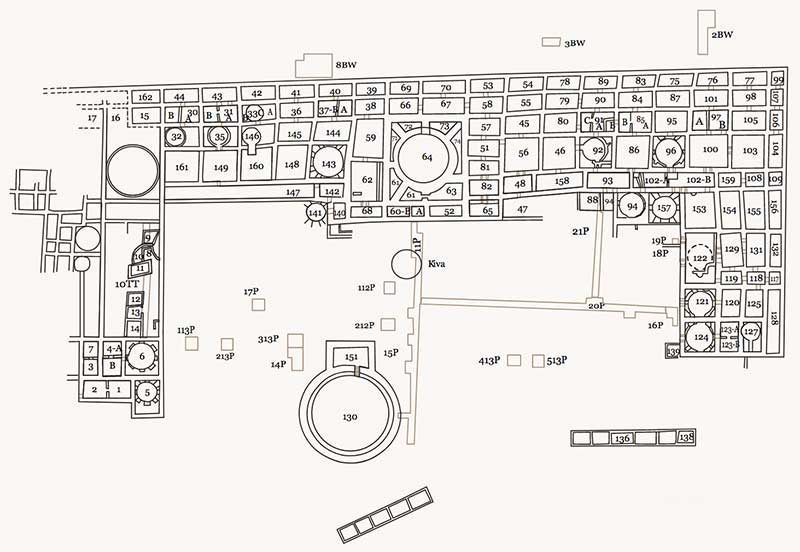130
Room 130W is the Great Kiva at Salmon Pueblo. It is located in the plaza, offset from the center of the pueblo. The center of the structure is aligned on a true-north axis with the center of the Tower Kiva (Room 64W). It measures 14.5 m in diameter inside from wall to wall and 17.5 m outside. A total of 112 strata was identified in 130W. Of these, 82 are feature-specific strata, while the rest cover a broad spectrum of deposits: structured trash, roof-fall, post-occupational fill, artificial fill, and five floor complexes. Four floors were San Juan in age with the lowest being Chacoan in origin. In all, 103 features were recorded in the Great Kiva. Except for 49 postholes, all features date to or were modified during the San Juan occupation. Other related features include construction rocks, doorways, hearths, wall niches, ash pits, a bench encircling the kiva, a stone stairway, and roof support columns. Many of these features are focused on the two large floor vault (foot drum) features. The eastern floor vault had a small space within that has been interpreted as an offering pit; it contained numerous calcite beads, turquoise, and the core from a bighorn sheep horn. In the vicinity of both floor vaults were numerous burned, impressed corn cobs; more than 71 were mapped in the area around the eastern floor vault. These may represent corn mothers. Storage pits were present around the structure; they probably held food or other items consumed during the ceremonies. Although no tree-ring dates mark its initial construction, we can infer that it was built during the initial Chacoan occupation at Salmon (around 1090). The later occupants substantially modified the structure, building an encircling cobble berm to improve structural support, refacing the interior masonry, and replacing the entire roof in the spring or summer of 1263 with hundreds of beams cut over a nearly 20-year period.

